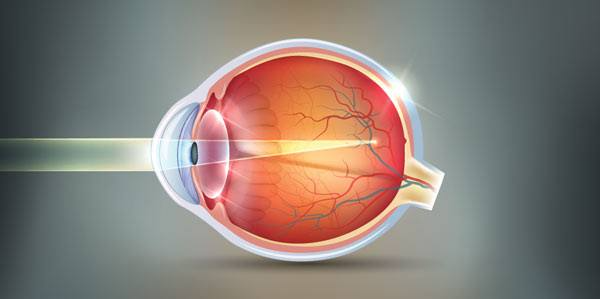Surface-Based Vision Correction with a Gentle Touch
For those seeking a flap-free and contactless alternative to LASIK, TransPRK (Transepithelial Photorefractive Keratectomy) offers a straightforward and effective option. Especially suitable for individuals with thinner corneas or active lifestyles, TransPRK uses laser precision to correct vision directly on the eye’s surface, without creating a flap or making any incisions.
At London Eye & Retina, we provide TransPRK as part of a tailored approach to vision correction. Whether you’re not suitable for LASIK or simply prefer a surface-based technique, TransPRK may be your path to long-term visual freedom.
What Is TransPRK?
TransPRK is a no-touch, single-step laser eye surgery that removes the outer layer of the cornea (epithelium) using an excimer laser, followed by reshaping the corneal surface to correct refractive errors. Unlike traditional PRK, which involves mechanical removal of the epithelium, TransPRK uses a computer-guided laser to perform both steps seamlessly.
It is used to correct:
- Myopia (short-sightedness)
- Astigmatism
- Mild hyperopia (long-sightedness)
How Does TransPRK Work?
- The laser gently removes the corneal epithelium in a touch-free, automated process.
- It then reshapes the cornea to focus light correctly on the retina.
- A bandage contact lens is placed on the eye to protect the surface during healing.
This entire procedure is performed without any instruments touching the eye, making it ideal for those with concerns about flap creation or corneal thickness.
Who Is Suitable for TransPRK?
TransPRK is often recommended for people who:
- Have thin corneas or irregular corneal shapes
- Are not suitable for LASIK or SMILE
- Engage in contact sports or activities where eye trauma risk is higher
- Prefer a flap-free, surface-based technique
A full eye assessment is needed to determine your suitability based on corneal thickness, eye health, and prescription stability.
Recovery and What to Expect
As TransPRK works on the surface of the eye, recovery is slightly longer than LASIK or SMILE. The epithelium typically takes 3–5 days to regenerate, during which vision may be blurry and mild discomfort can occur.
Most patients return to work or study within a week, with vision continuing to improve over the following weeks. Long-term results are comparable to other laser procedures.
Benefits of TransPRK
- No Flap, No Incision: Reduces the risk of flap-related complications
- Touch-Free Laser Application: Minimises infection risk
- Safe for Thin Corneas: Preserves corneal structure
- Lower Risk of Dry Eyes: Less impact on corneal nerves compared to LASIK
Choosing the Right Vision Correction Method
TransPRK is one of several laser vision correction techniques we offer. During your consultation at London Eye & Retina, we’ll help you understand your options, from LASIK to SMILE and TransPRK. So you can make an informed decision based on your eye health, lifestyle, and visual goals.
Schedule a consultation with Dr. James Ng at London Eye & Retina and explore your options for clearer, sharper sight.
Let us help you find a clearer path to sharper vision.


